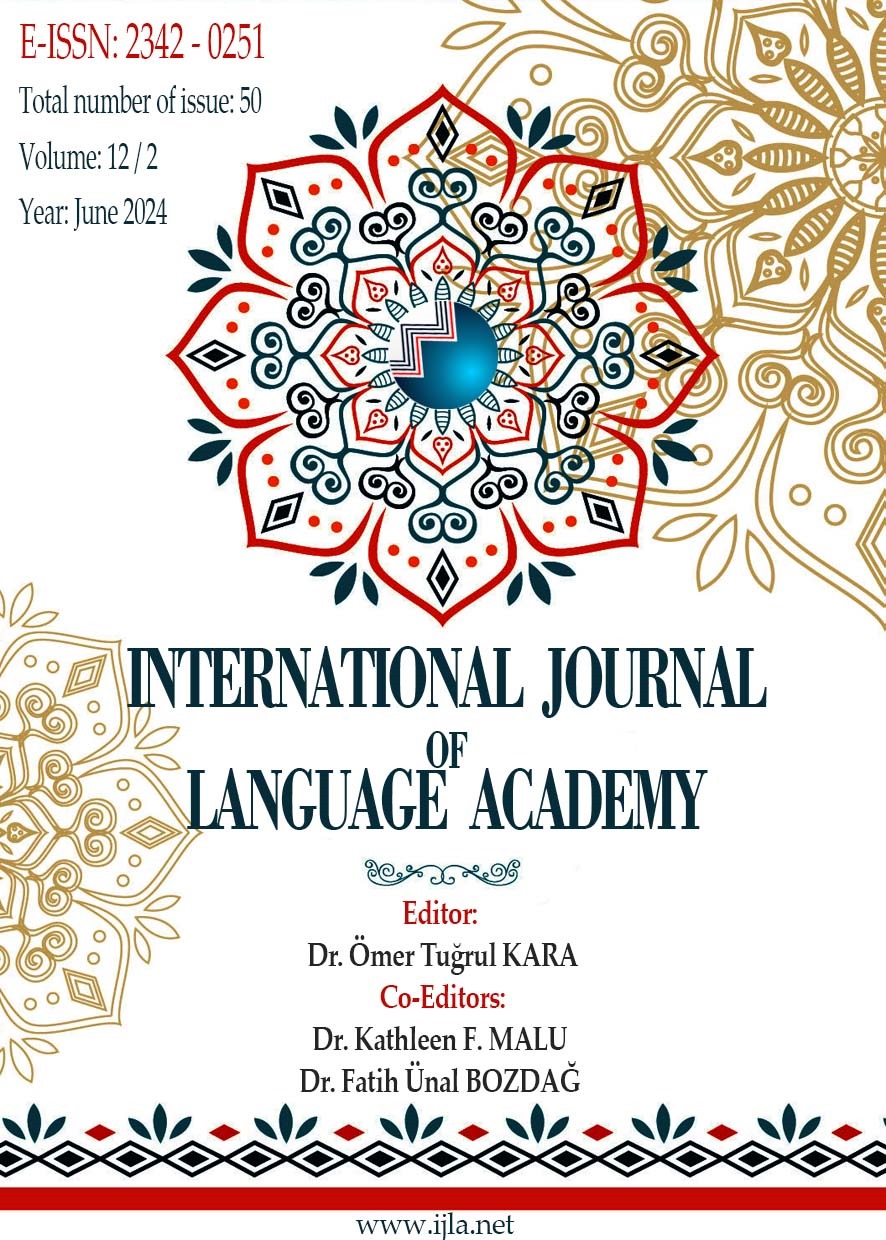8. SINIF TÜRKÇE DERS KİTABINDA OKUDUĞUNU ANLAMA BECERİSİNİ GELİŞTİRMEYE YÖNELİK STRATEJİLERİN KULLANILMA DURUMU ÜZERİNE BİR ARAŞTIRMA
Author :
Abstract
İlköğretim 8.sınıf Türkçe kitabında okuduğunu anlama stratejilerine yer verilme düzeyini incelemeyi amaçlayan bu çalışmada doküman analizi yöntemi kullanılmıştır. Araştırma kapsamında ilgili alanyazın taranarak ve uzman görüşleri alınarak 16 okuduğunu anlama stratejisi belirlenmiş ve bu stratejiler ilköğretim 8.sınıf Türkçe ders kitabında yer alan kazanımlar ile PIRLS sınavında ölçülen becerilerle ilişkilendirilmiştir. Araştırmanın verileri araştırmacılar tarafından geliştirilen ve uzman görüşleri alınan okuduğunu anlama stratejileri kontrol formu ile toplanmıştır. Araştırmada incelenmek üzere diğer sınıf düzeylerini kapsadığı ve daha fazla strateji barındırdığı düşünüldüğü için MEB yayınları tarafından basılan ilköğretim 8. sınıf Türkçe ders kitabı seçilmiştir. Veriler üç araştırmacı tarafından ayrı ayrı toplanmış ve ortak bir görüş üzerinde birleştirilmiştir. Araştırmanın verileri betimsel analiz yöntemiyle analiz edilmiştir. Araştırma sonucunda 16 stratejinin toplam 354 kez kullanıldığı, kullanılan stratejilerin üçte birinden fazlasını bilginin yerini belirleme stratejisinin oluşturduğu, en az kullanılan stratejilerin görselleştirme ve aşamalandırma stratejileri olduğu, 8 stratejinin %2 ve daha az kullanım oranına sahip olduğu, bazı kazanım ve becerilere ait hiçbir etkinlik bulunmadığı ortaya çıkmıştır. Ayrıca metin türleri açısından kitapta 13 farklı türde metin bulunduğu, 7 metin türüne sadece bir kere yer verildiği, en fazla farklı türde stratejinin hikâye türünde kullanıldığı, en az farklı türde stratejinin ise efsane ve destan türlerinde kullanıldığı tespit edilmiştir. Çalışmanın bulgularına göre okuduğunu anlayabilen, analiz, sentez ve değerlendirme gibi üst düzey basamaklara çıkabilen, yorumlama, sorgulama ve eleştirel düşünme becerilerine sahip bireyler yetiştirmek için ders kitabında bu becerileri geliştirecek stratejilere ağırlık verilmesi, yazarların ders kitaplarını tasarlarken okuduğunu anlama stratejilerini temel alması ve ülkemizin PIRLS ve PISA gibi sınavlarda sıralamasını yükseltmesi için okuduğunu anlama stratejilerinin kullanılması önerilebilir.
Keywords
Abstract
This study employed document analysis to examine the level of inclusion of reading comprehension strategies in the 8th grade Turkish textbook. For this research, 16 reading comprehension strategies were determined by reviewing the relevant literature and taking expert opinions, and these strategies were associated with the learning outcomes in the 8th grade Turkish textbook and the skills measured in the PIRLS exam. The data were collected through reading-comprehension strategies control form developed by the researchers. The 8th grade Turkish textbook published by MoNE was chosen to be analyzed in the study because it was thought to cover other grade levels and contain more strategies. The data were collected separately by researchers and combined on a consensus. The results revealed that 16 strategies were used a total of 354 times, the locating information strategy constitutes more than one third of the strategies, the least used strategies were visualization and sequencing, 8 strategies had a usage rate of 2% or less, and there were no activities for some acquisitions and skills. Moreover, in terms of text genre, it was determined that there were 13 different types of texts, 7 text types were covered only once, the most different types of strategies were used in the story genre, and the least different types of strategies were used in the legend and epic genres. In order to raise individuals who can comprehend what they read, reach higher-order skills such as analysis, synthesis and evaluation, have interpretation, questioning and critical thinking skills, it can be recommended that strategies that will develop these skills should be emphasized in the textbooks, that authors should take reading comprehension strategies into account while designing textbooks, and that reading comprehension strategies should be used in order for our country to increase its ranking in exams such as PIRLS and PISA.





